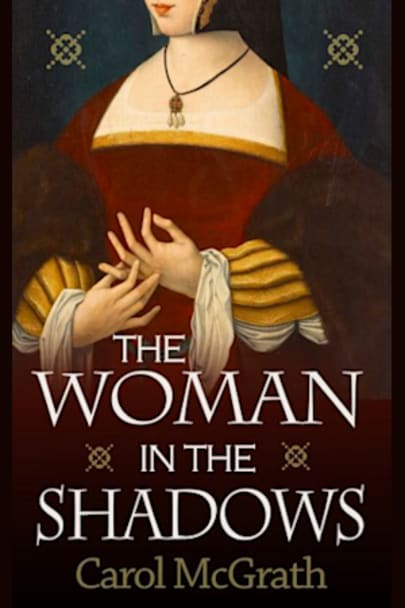An evocative new novel by the critically acclaimed author of The Handfasted Wife, The Woman in the Shadows presents the rise of Thomas Cromwell, Tudor England’s most powerful statesman, through the eyes of his wife Elizabeth. When beautiful cloth merchant’s daughter Elizabeth Williams is widowed at the age of twenty-two, she is determined to make herself a success in the business she has learned … has learned from her father. But there are those who oppose a woman making her own way in the world, and soon Elizabeth realises she may have some powerful enemies – enemies who also know the truth about her late husband.
Security – and happiness – comes when Elizabeth is introduced to kindly, ambitious merchant turned lawyer, Thomas Cromwell. Their marriage is one based on mutual love and respect…but it isn’t always easy being the wife of an independent, headstrong man in Henry VIII’s London. The city is filled with ruthless people and strange delights – and Elizabeth realises she must adjust to the life she has chosen…or risk losing everything.
more



The Woman in the Shadows is a fictional account of the adult life of Elizabeth Wykes, the wife of Thomas Cromwell, a man from relatively humble origins who rose from merchant and lawyer to become chief minister to Henry VIII. For most people, all that is known of Elizabeth is as Cromwell’s wife, a background figure in Hilary Mantel’s Wolf Hall novels. Here Carol McGrath takes the little that is known of Elizabeth from public records and, using her knowledge of the society in which Elizabeth lived, has created a well-rounded and plausible portrait of an Early Modern woman.
The story is told from Elizabeth’s point of view, in the first person. It is not a linear retelling of her life but begins in 1526 when she has been married twelve years to Thomas Cromwell. It then quickly moves back to 1513 to the day of her first husband Thomas Williams’ funeral, and within a chapter drops further back to 1509 to the lead up to her first marriage. The story slips between these separate time periods but the transition is marked by dates and is so seamless that there was no difficulty in understanding. It does help that the bulk of the story centres on the period of Elizabeth’s widowhood and Thomas Cromwell’s courtship and marriage to her. The making of Elizabeth’s marriages is realistic and shows the elements in play at this time – the role of family and particularly fathers’ wishes, the need to balance material welfare and social connections against personal liking, if this was taken into account at all.
The early 16th century is richly imagined with the sights and smells of London set against the religious practices that made up the cycle of the year. As Elizabeth is a cloth merchant, the colours, textures and uses of the cloth she trades in provide an added depth, as do the tasks she undertakes in her trade. This element also highlighted the position of women in this period and the way even an ‘independent’ woman needed to rely upon men to get her business done. The story follows her struggles as a widow to maintain and grow the business inherited from her husband against hostility and threats both from those with desire to see her fail simply because she is a woman and those who want her business for themselves. Elizabeth is an intelligent, educated, but conventional woman who would be content with a life simply as a prosperous merchant’s wife. As her relationship with Cromwell develops, particularly after their marriage, she discovers that although he loves her, there are facets to his character she had not expected. She is uneasy with his vaunting ambition, the work he does for Cardinal Wolsey, and the life he leads away from her, a concern for many a wife of a rising man.
In her Author Note, Carol McGrath says she wanted to, among other things, create a sensory portrait of London in this period and to explore the everyday life of an early Tudor woman – these she has done to perfection.